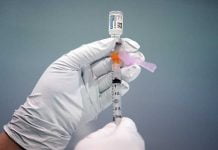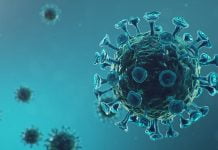Jeff Pack
Staff Writer
Riverside University Health System reported 518 new cases of COVID-19 Friday and two deaths due to the virus since Thursday. In all, 28,695 have tested positive for the virus and 587 people have died since the county began recording data back in early March.
The county reported 145 people have recovered from the virus overnight and there were four more people in the hospital, 535 total. There are currently 130 people currently being treated in ICUs for the virus, four fewer since the day before.
Locally, Temecula added 15 cases (512). Murrieta added nine (562), Wildomar added four (245), Lake Elsinore added 14 (560), Canyon Lake added one (38), Menifee added 15 (612), Hemet added 21 (725), and San Jacinto added five (509).
In local communities, Anza added no new cases (7), East Hemet added one (145), French Valley added two (158), Lakeland Village added two (88), Valley Vista added one (92), and Winchester didn’t add any new cases (6).
So far, one person has died from Temecula, 12 from Murrieta, five from Wildomar, 10 from Lake Elsinore, none from Canyon Lake, nine from Menifee, 30 from Hemet, nine from San Jacinto, none from Anza, two from East Hemet, one from French Valley, two from Lakeland Village, none from Valle Vista or Winchester.
The county reported that there were 268 confirmed cases in county jails and another 1,184 cases recorded in state prisons within the county.
On Tuesday, the county reported that 307,617 have been tested so far, 6,645 more than the day before,
County Department of Public Health Director Kim Saruwatari told the Board of Supervisors on Tuesday that the average positivity rate for those screened for the virus countywide is at 20%, more than double the preferred state threshold of 8%.
“The high positivity rate is something we continue to watch,” Saruwatari said.
She said the doubling time — or the number of days in which documented virus cases increase 100% — is at 23.7 days. A doubling rate of seven days is considered severe.
According to Saruwatari, there have been notable “shifts” in infections impacting different age groups. One was the 18-39 year-old block, which in May comprised 36% of both symptomatic and asymptomatic diagnoses.
Saruwatari said the group made up 47% of cases in June.
“The shift to a younger age group is concerning to us,” she said, urging all residents to take precautions to safeguard against exposure.
City News Service contributed to this report.
Jeff Pack can be reached by email at jpack@reedermedia.com.












